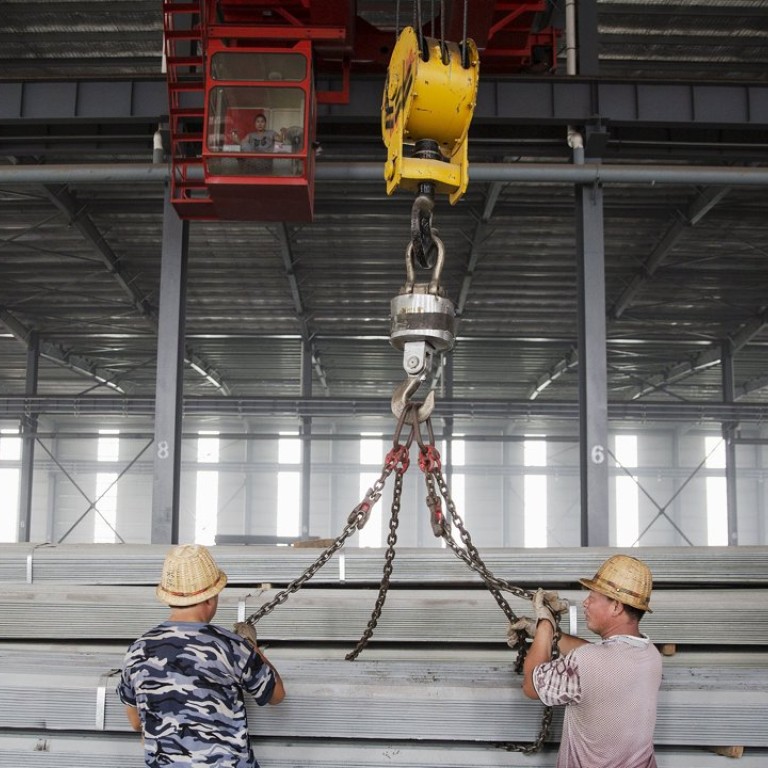
Now that big miners accept reality of low commodity prices, will dividend cuts, asset sales and closures follow?
There is virtually no sign of any major supply leaving the market
It may seem like stating the obvious, but top miners BHP Billiton and Rio Tinto have said recently that they expect commodities prices to remain subdued.
While it is important that two of the world’s top three mining companies acknowledge what the rest of the market has believed for some time, what’s more important is how they respond to the realities they now face.
The first reality is that growth has slowed in China by more than the resource companies, and indeed most market analysts, expected when investment decisions on expanding capacity were made about five years ago.
The second reality is that those capacity expansions have created a structural oversupply for many commodities, particularly iron ore, coal and liquefied natural gas (LNG).
We’re relatively bearish about the long-term projections for prices
“The first thing I would say is we’re relatively bearish about the long-term projections for prices,” BHP chief executive Andrew Mackenzie said following a speech in Melbourne on Thursday.
“But, yes, I am optimistic about the long-term growth in demand, because I know the kind of resources it requires to push three, four billion people into the middle classes, particularly in Asia, and the kind of consumption that will come from that.”
This would appear to be a shift in emphasis on BHP’s part.
Previously it was all about China, and that country’s forecast appetite for the commodities most associated with industrialisation.
Now that has been expanded to include the rest of Asia, which no doubt means a strong focus on India and Indonesia, the large population nations that lag behind some of the region’s more advanced economies, such as Malaysia and Thailand.
Mackenzie hasn’t given up on China, as he was still expressing confidence that steel production would rise to close to 1 billion tonnes a year, or about 25 per cent more than the likely output of about 800 million tonnes this year.
The problem for Mackenzie and other iron ore producers is the pace at which China develops.
The 1 billion-tonne-a-year scenario requires the pace of development to accelerate from where it is currently, something that is possible but is no longer the most likely outcome.
Rather it’s more likely that China will still be able to reach its development goals at a slower pace, meaning that steel output at current levels is more than adequate over the medium to long term.
This would be bad news for BHP, Rio and top iron ore producer Vale, given the billions of US dollars they invested to expand mines and ports.
Rio’s head of copper and coal, Jean-Sebastien Jacques, said on November 26 that oversupply and slower Chinese growth would keep prices under pressure.
Rio’s iron ore boss, Andrew Harding, was also recently fairly bullish on the long-term outlook for iron ore, telling an event last week that the price of iron ore hasn’t “fallen off a cliff”, even though it is at the lowest for at least a decade.
“The market’s actually working how markets always do in any commodity, not just mining,” he said. “Supply will follow demand, it doesn’t pace perfectly with demand.”
Spot Asian iron ore has fallen below US$40 a tonne for the first time since assessments commenced in 2008, hitting US$39.40 on Friday.
Implicit in Harding’s comment is that while he is still bullish on the demand outlook, for the market to balance the adjustment will have to be on the supply side.
While Rio, BHP and Vale run the lowest-cost mines and are in little danger of closure, the implication is that miners with margins that are already wafer-thin must be most at risk.
But there is virtually no sign of any major supply leaving the market, in fact, just the opposite with the first cargo from the new US$10 billion Roy Hill mine in Western Australia expected to be shipped this week.
The mine, majority owned by billionaire Gina Rinehart, whose father Lang Hancock discovered the massive iron ore deposits in Australia’s remote northwest, is planned to produce 55 million tonnes a year, part of the 234 million tonnes of output that has been added to global output in the past two years.
So far, miners have been able to cut costs by enough to stay ahead of falling prices, but this isn’t a process that can work indefinitely.
At some point, in the absence of a massive demand surge, there will come a point when supply has to be rationalised.
While this may come about with a major producer going out of business, it may also be at the hands of disgruntled shareholders, tired of seeing share prices beaten down.
The last straw may come if BHP and Rio are forced, like smaller rival Anglo American is expected to do this week, into cutting their dividends.
So how will the miners respond to the reality of low prices? So far it’s been all about cost-cutting, both for capital and operating expenditures.
But what comes next? Dividend cuts to preserve capital, asset sales of divisions deemed non-core, closure of uneconomic mines? The longer commodity prices remain in the doldrums, the more these options will have to be explored.
Reuters

